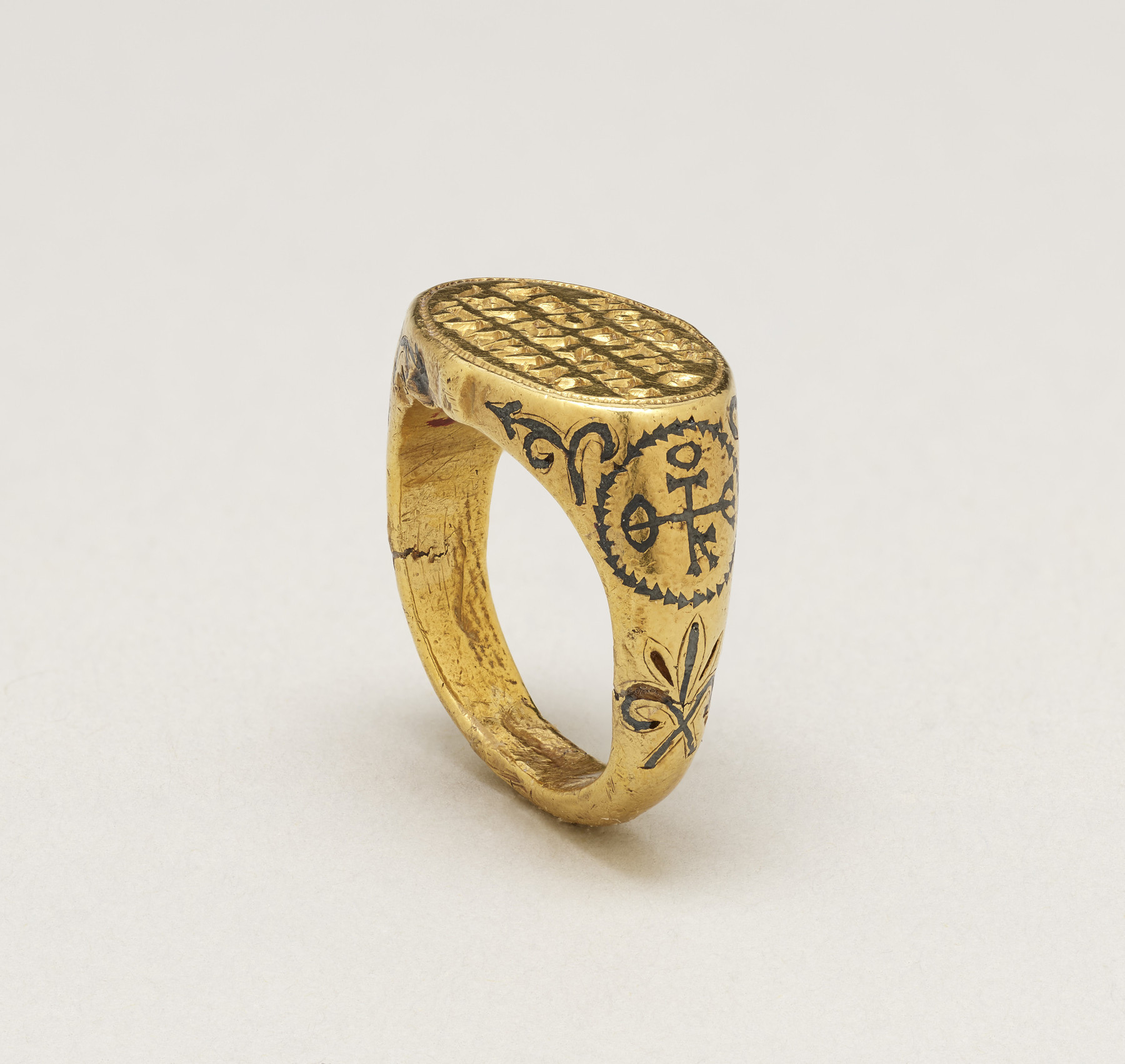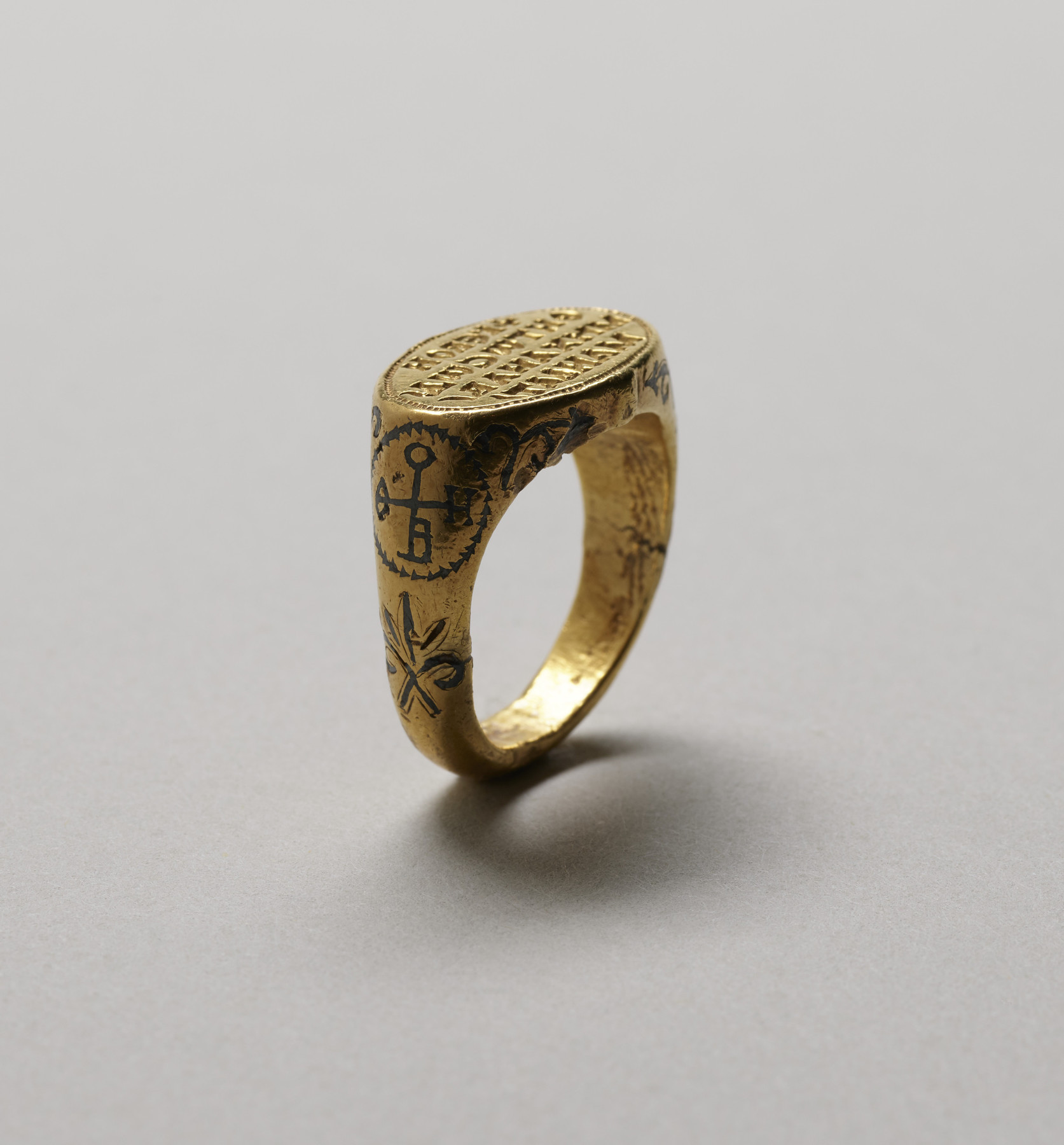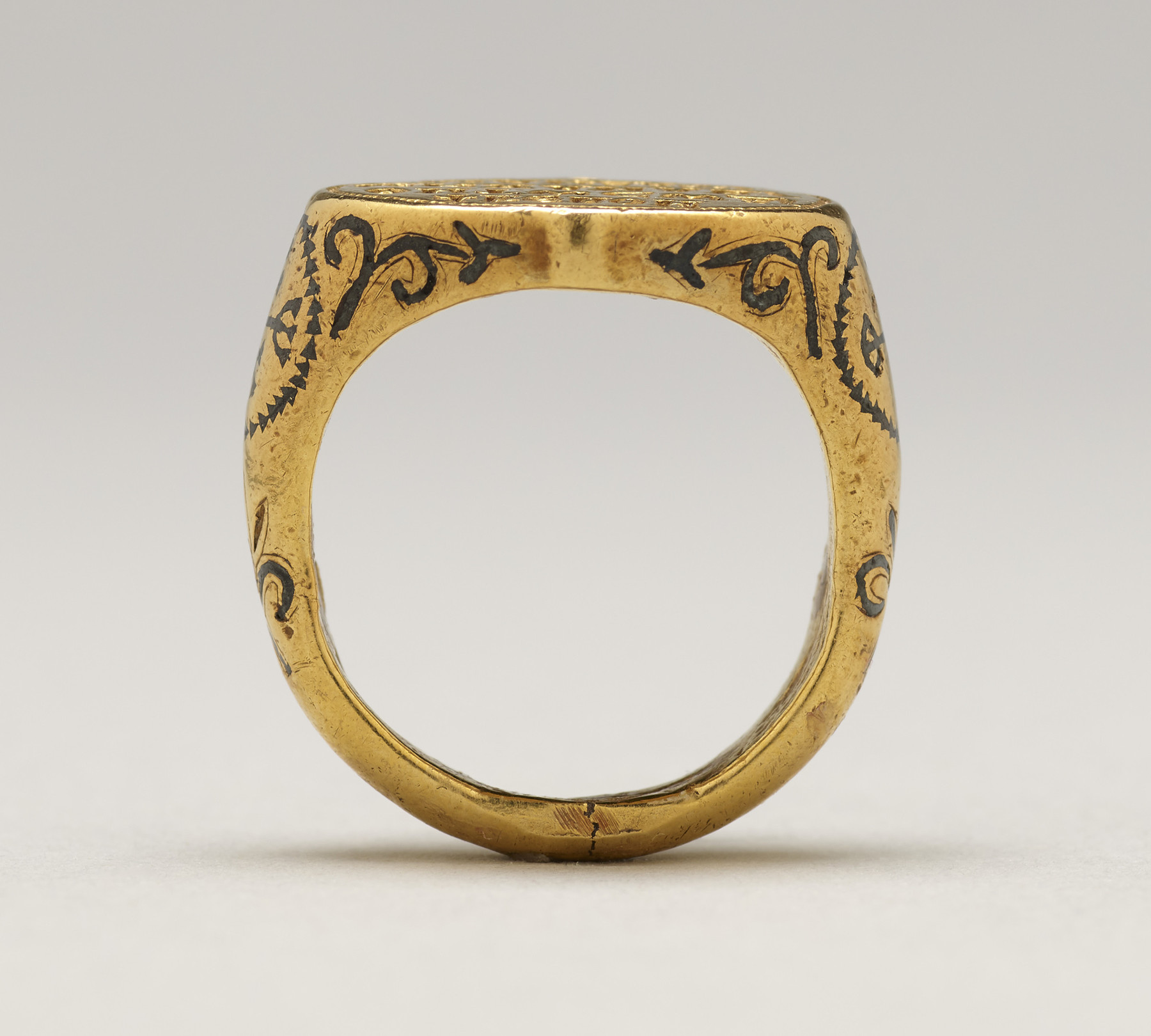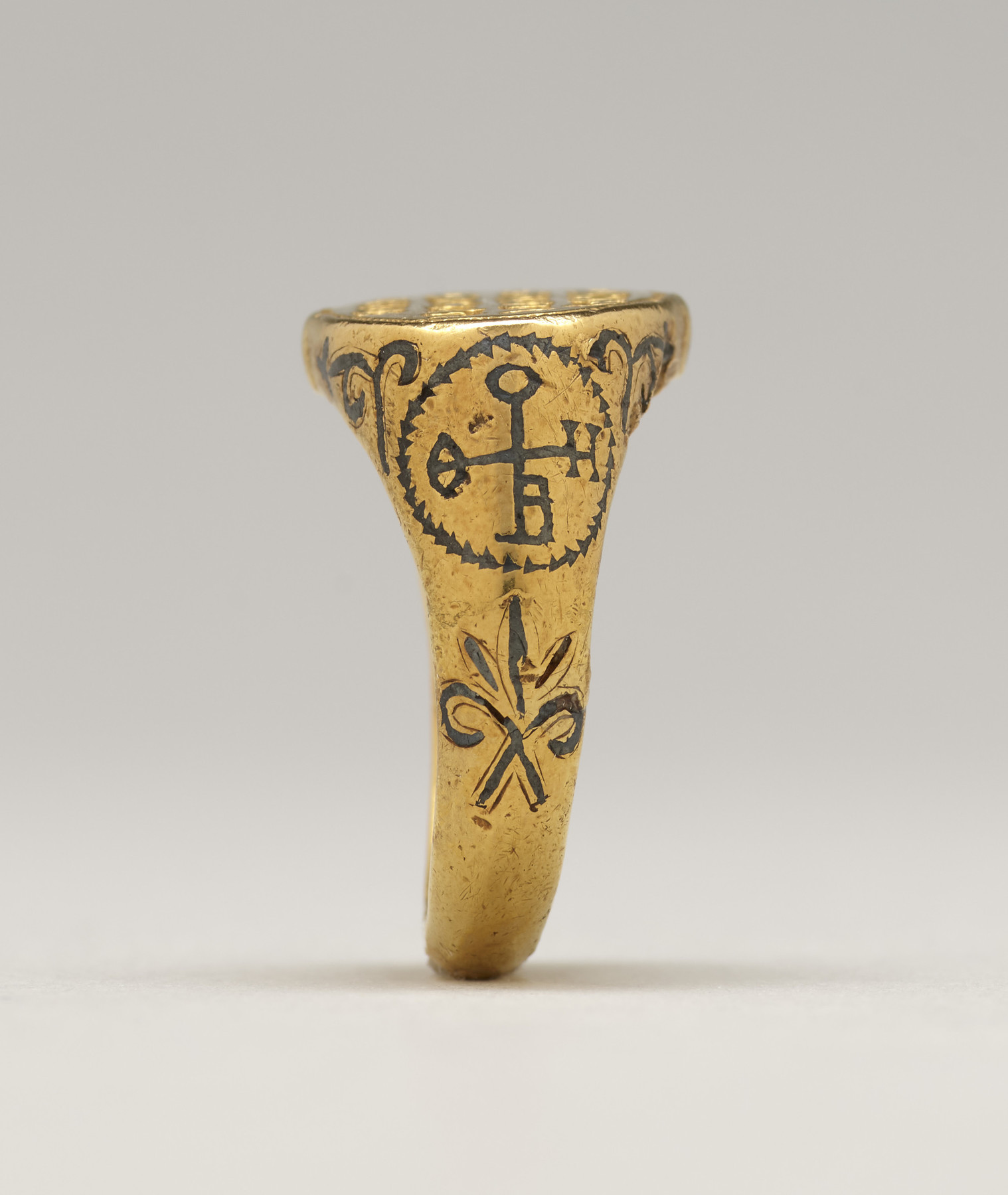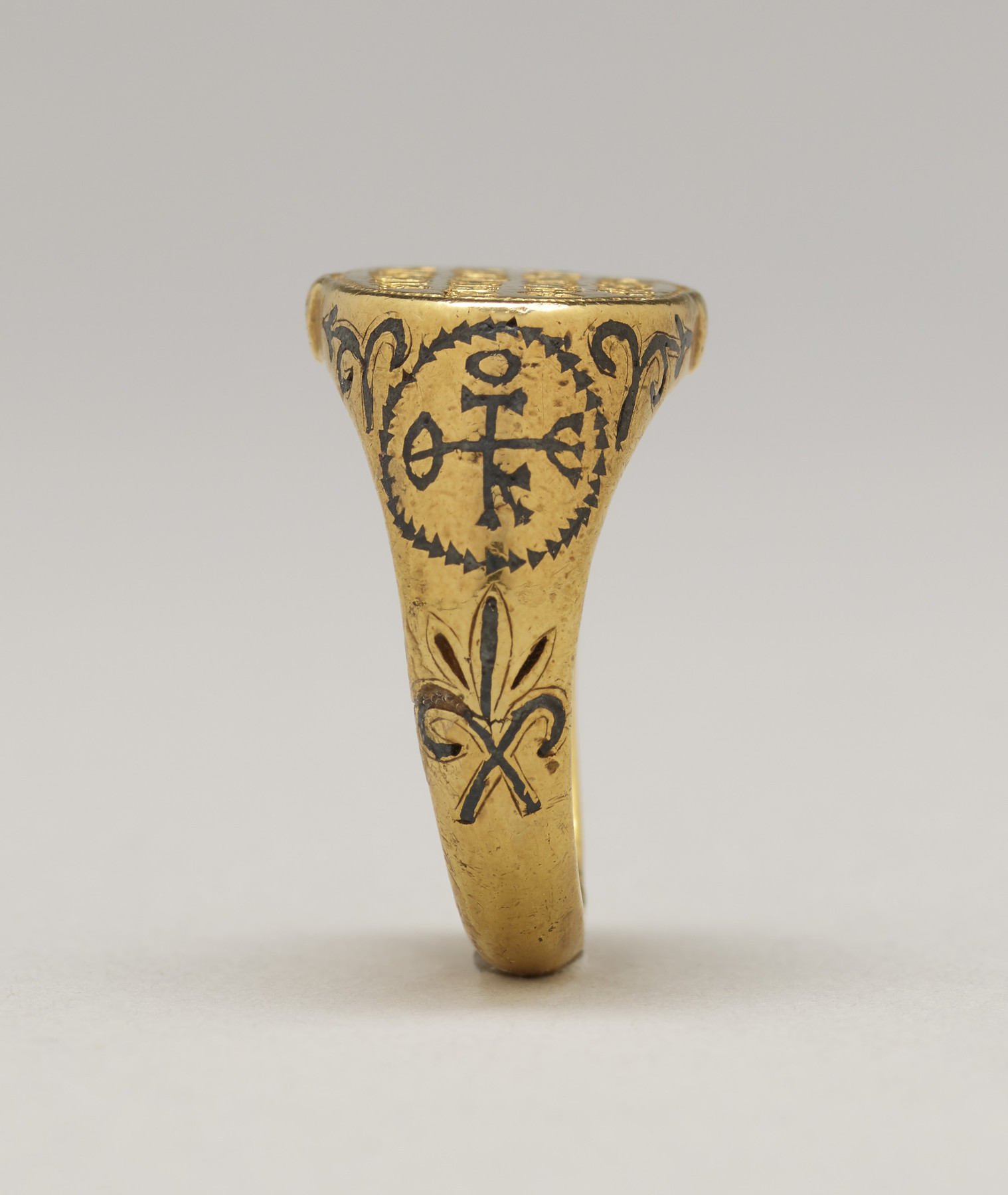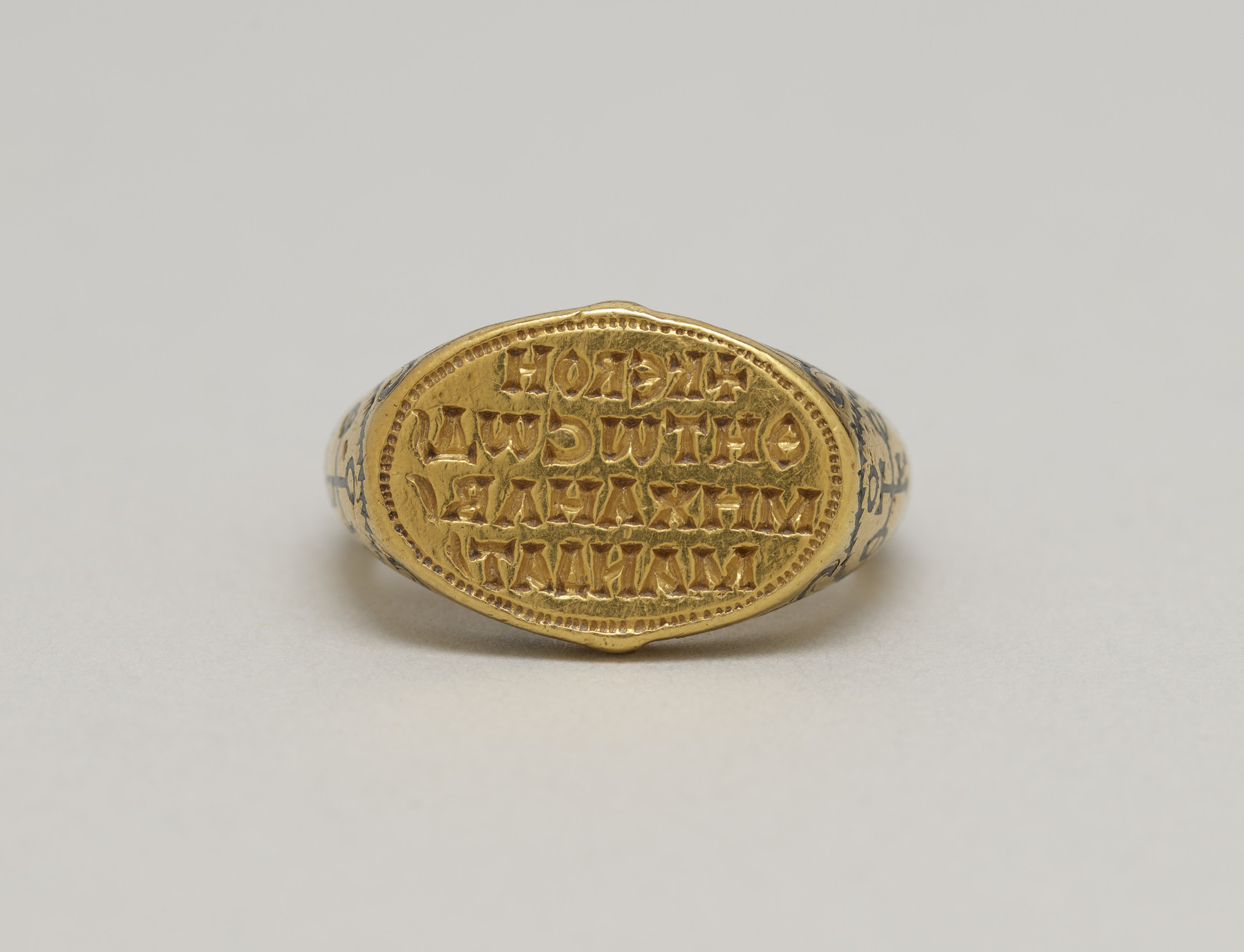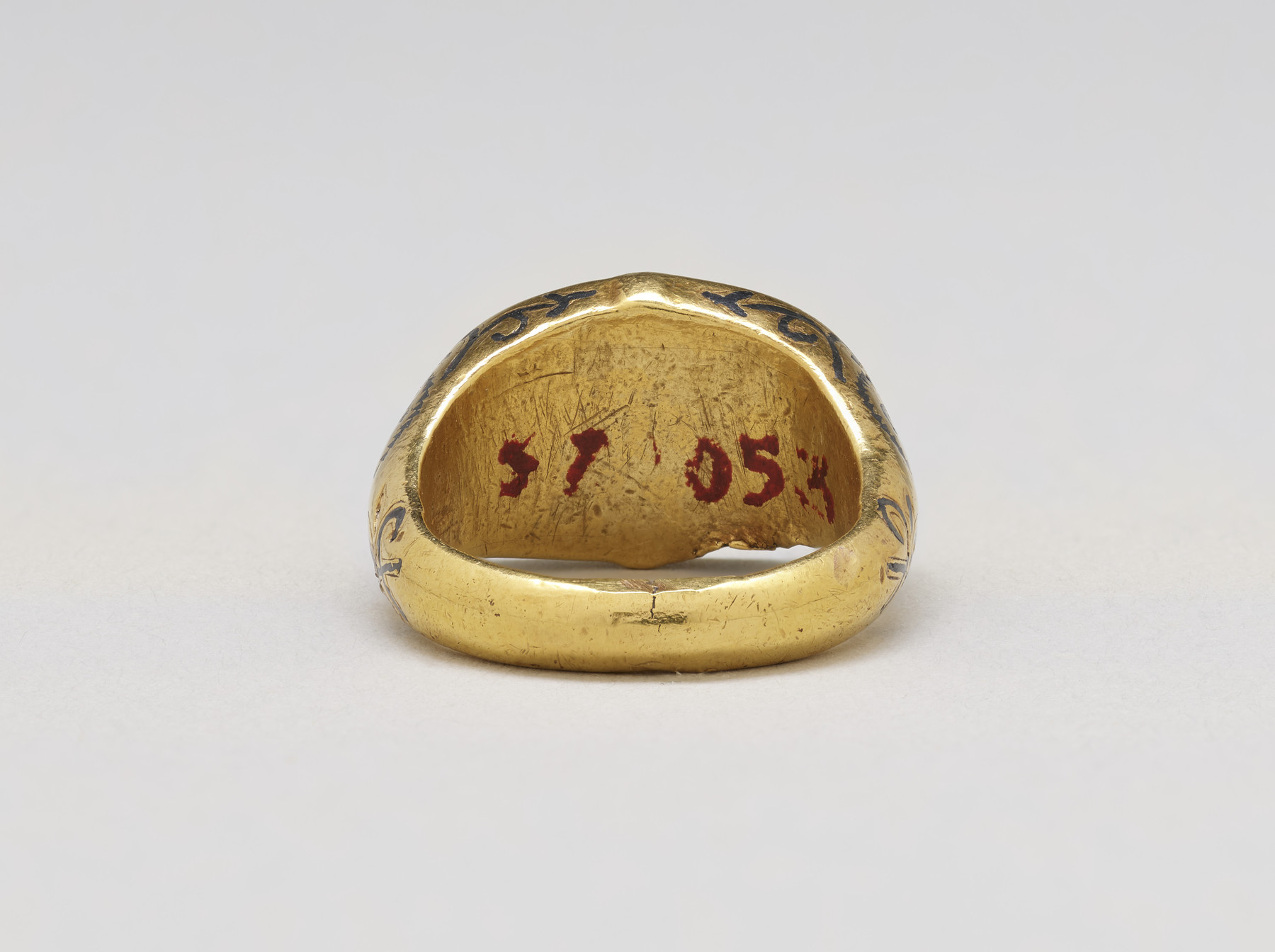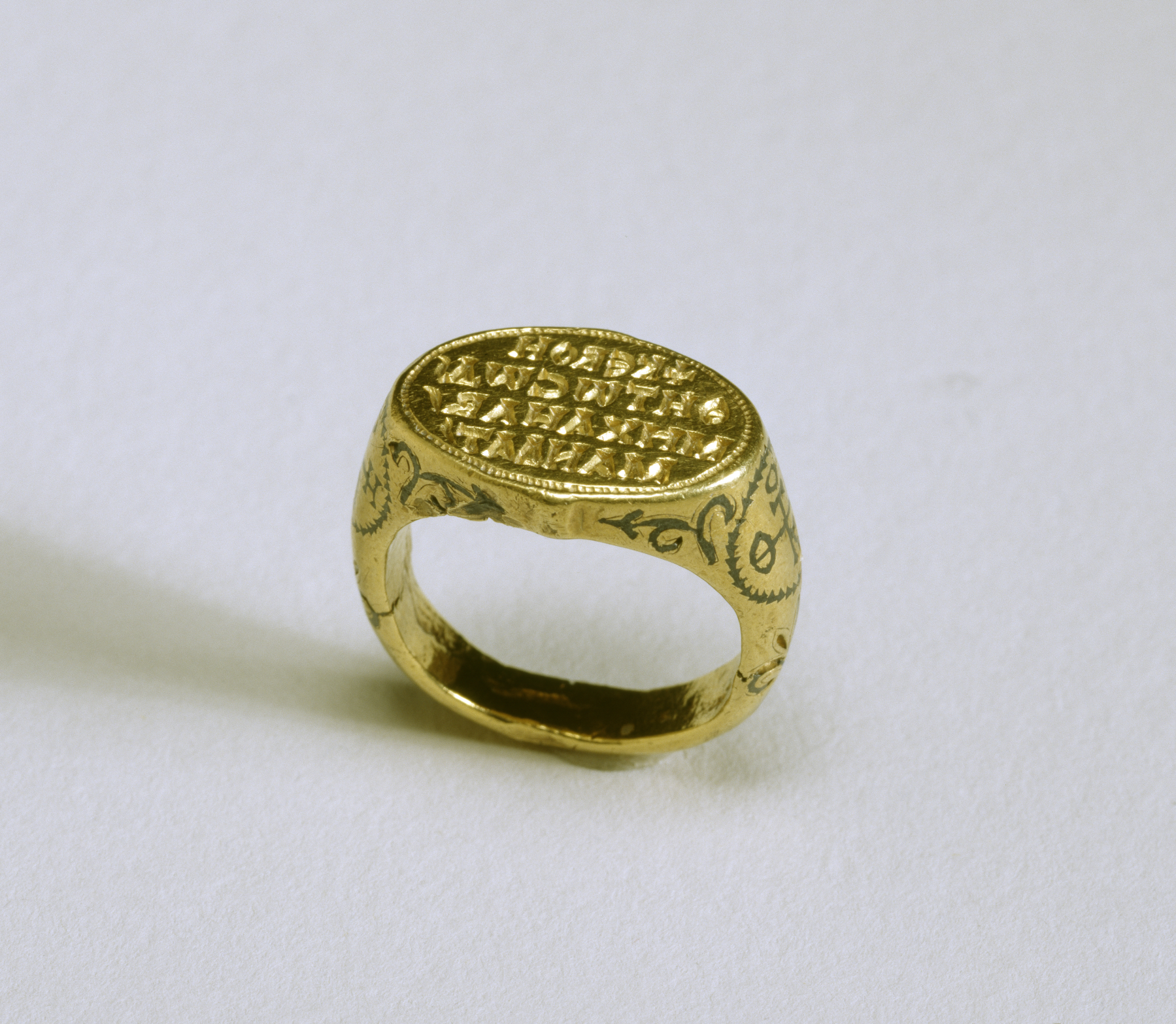Seal Ring
This gold seal ring has four lines of Greek inscription in reverse on the oval bezel. The monograms and decorative vine scrolls on the shoulder are done in niello.
The mandators (literally "messengers") were Byzantine state officials employed for special missions such as acting as guides for foreign envoys. The office disappeared in the 11th century.
Inscription
Provenance
Provenance (from the French provenir, 'to come from/forth') is the chronology of the ownership, custody, or location of a historical object. Learn more about provenance at the Walters.
F. A. Harman Oates, London, by purchase; Sale, Sotheby's, London, February 20, 1929, lot 14; Léon Gruel, Paris, 1929, by purchase; Henry Walters, Baltimore, 1929, by purchase; Walters Art Museum, 1931, by bequest.
Exhibitions
| 2010 | Bedazzled: 5,000 Years of Jewelry. El Paso Museum of Art, El Paso. |
| 2006-2009 | Bedazzled: 5,000 Years of Jewelry from the Walters Art Museum. Frist Center for the Visual Arts, Nashville; The John and Mable Ringling Museum of Art, Sarasota; The Walters Art Museum, Baltimore. |
| 1979-1980 | Jewelry - Ancient to Modern. The Walters Art Gallery, Baltimore. |
| 1947 | Early Christian and Byzantine Art. Baltimore Museum of Art, Baltimore. |
Geographies
Turkey, Istanbul (Constantinople) (Place of Origin)
Measurements
H: 1/2 x W: 7/8 x D: 15/16 in. (1.3 x 2.3 x 2.4 cm)
Credit Line
Acquired by Henry Walters, 1929
Location in Museum
Centre Street: Third Floor: Byzantine, Russian, and Ethiopian Icons
Accession Number
In libraries, galleries, museums, and archives, an accession number is a unique identifier assigned to each object in the collection.
In libraries, galleries, museums, and archives, an accession number is a unique identifier assigned to each object in the collection.
57.1053

